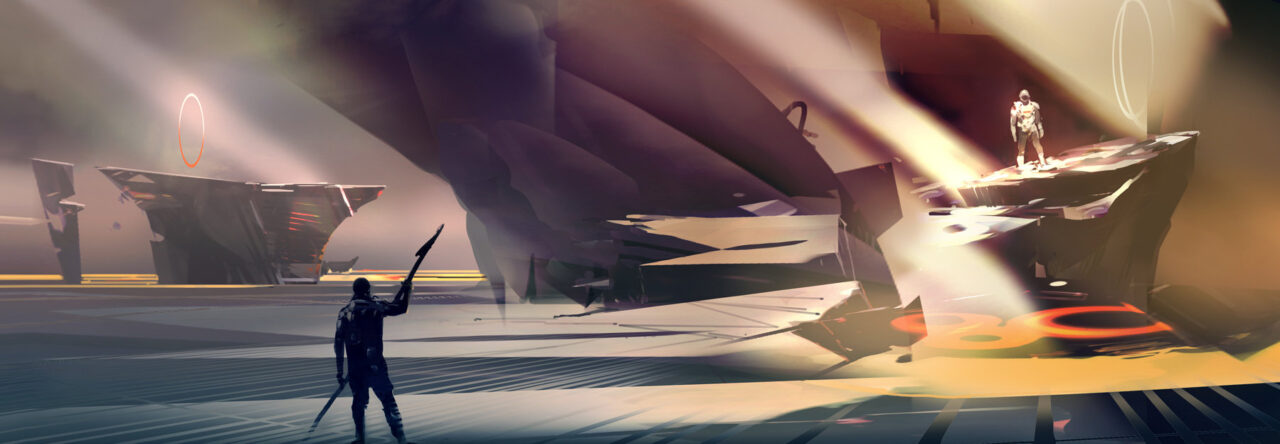Method acting has led to some of film and tv’s greatest performances, but is the act of embodying a character worth the potential negative effects towards mental health, physical health, and relationships? Method acting is commonly known as an acting technique consisting of the actor physically and emotionally identifying with the character they are playing. In his journal. “The Art of Method Acting”, researcher Palanimurugan Priya states that, “The key to immersion is emotional authenticity. The actors use their emotions and emotional memories, drawing on their own experiences to authentically convey the character’s emotions. This process gives actors a fountain of real emotion that plants depth and truth in the character.” These revered performances shown here, Heath Ledger in The Dark Knight, Christian Bale in The Machinist, and Jeremy Strong in Succession, were all made possible by dedication to method acting, but each role took a toll on all three actors to varying extents. I chose these actors because they each represent a part of my thesis. Heath Ledger represents the mental effects, Christian Bale represents the physical effects, and Jeremy Strong represents the effects method acting has on relationships. An actor bringing their emotions into a performance can blur the line between fiction and reality. That is why, in the poster, I slightly blurred the faces of the actors and their characters, because it is not always clear which persona they are at any given time. I also placed the characters behind the actor’s shoulders as if they were creeping behind them, or attached to them, because even after a certain role is done, they will always stick with them. Lastly, I used contrasting colors to convey the difference between the character and the actor. Method Acting is a risky but rewarding practice that can lead to mental health issues, physical health issues and relationship conflicts, but also leads to award winning performances.
Author: Andrew Curtis

In the Game Of Thrones books, otherwise known as A Song Of Ice And Fire, the character Theon Greyjoy begins the story slightly unlikeable, becomes extremely hated, is thought to be dead, then struggles to redeem himself. In that struggle, he somehow finds his way into the heart of the reader despite his past wrongdoings.
A large chunk of A Song Of Ice And Fire follows the Stark family, their downfall, and the subsequent stories of the children of the family, and how they cope with horrible events that happen to them. Theon Greyjoy finds himself in the center of this family, as a ward. For context, on the fictional continent of Westeros, there are 7 great houses that pledge fealty to one king. The leaders of these houses are called Wardens of their respective regions, and all the family members of these great houses are pivotal political players. The Starks defeated the Greyjoys when they tried to rebel from the crown, and the Starks took a son from the Greyjoys to keep them in line.
Theon always felt like an outsider in the Stark family, despite them treating him with respect. Theon grew up with the stark children as somewhat of a sibling to them, but he always felt different because he was essentially a glorified hostage. At the end of the first book, the Warden of the North is executed by the king for crimes he didn’t commit, and this leads to his oldest son Robb Stark declaring independence from the seven kingdoms, and becoming The King in The North.
In the second book in the series, A Clash Of Kings, Theon acts as Robbs right hand man, as they were good friends growing up. Robb trusts him enough to send him as an envoy to Theon’s original home, The Iron Islands, to negotiate with his father to gain ships for Robb’s cause. Unfortunately, Theon allows himself to be manipulated by his father Balon, who also wants to be a king. Deep down, Theon wants to feel like he belongs somewhere, and he wants to be accepted by his father and his people. He doesn’t feel like he belongs anywhere. In the north he is a hostage. No matter how good they treat him, if his father rebelled again he would be killed. But in his original home, everyone treats him as if he is a northern man, having no respect for the heir to their lands. He is faced with a decision he feels is tough, and he chooses to chase the approval of his people and his father.

Theon betrays his friend Robb, and him, and a few of his ironborn soldiers take over the Starks castle Winterfell. Since Robb is warring in the south, the only people to protect Winterfell are the young Stark boys Bran and Rickon, and older men. They easily take the castle and put a number of the inhabitants to the sword. The place that our favorite characters call home, is torn apart by Theon. At the end of the book, one of Theon’s lackeys that was helping him commit atrocious crimes reveals himself to be the bastard son of an important northern lord that wants to betray the Starks and take Winterfell for himself. This bastard, Ramsay Snow, leads his fathers men into Winterfell and demolishes Theon, and the castle. Theon’s men had already abandoned him before this happened, and his dreams of glory were shattered.
Theon is thought to be dead for two whole books, and everything goes on without him. 14 real life years pass between Theon’s “death” in A Clash Of Kings, and his return in A Dance With Dragons. But the audience doesn’t know it’s him at first. Theon’s old chapters were all titled “Theon”. Every character in the books have their chapters titled with just their name. But in A Dance With Dragons, a character appears who’s chapters are titled “Reek”. The reader finds out fairly quickly that this character is Theon, but it takes over half the book for Theon to remember who he is. During the two books he wasn’t in, Theon experiences this divided identity as a result of being horrifically tortured by Ramsay, so bad that his hair turned gray in his mid 20’s. Theon was beaten so badly into submission, that Ramsay convinced him that he was someone else entirely, that existed only to serve Ramsay, named Reek.
Ramsay and his father now have control over the north, after contributing to the betrayal of their former, now dead king Robb Stark. Theon feels responsible for the death of his friend and king, realizing he chose the wrong side. Throughout the book, Reek does everything in fear of what will happen if he disobeys, but he slowly remembers who he is, and comes to terms with the mistakes he made in the past. After learning to take pride in who he is, and separating himself from the persona of “Reek”, Theon secretly helps northerners in Winterfell. He knows that he can never make up for the mistakes in the past, but he can do what he can to help the people that were truly there for him, that he didn’t see. Towards the end of the book, Theon escapes from Winterfell, and saves a child bride that was promised to Ramsay. He stands up to his abusers, and remembers that he is not Reek, he is Theon Greyjoy.

In the show, Theon’s character arc is already finished, and it is one of the few things the show got right. In the very end, when unexplainable forces are coming to kill Bran Stark, Theon sacrifices his life for him, and in his final moment, Bran says, “You’re a good man, Theon.”
In Dragon Ball Super, the sequel to the iconic anime Dragon Ball Z, the main character Goku faces a challenge unlike any he’s ever faced before. Long story short, Goku, his rival Vegeta, and the rest of the z-fighters have a friend from a different timeline, where all of the z-fighters died, including Goku. The friend is named Trunks, and he’s an older, alternate timeline version of Vegeta’s son. Future Trunks is the lone hero of his timeline, but when Goku lived, he was the beacon of hope to those around him. This is where Zamasu comes in.
Zamasu lives in the same timeline as Future Trunks, and is the apprentice of a god, but he fell down a dark path. He also has the power to essentially shapeshift into any human form. He chooses to appear the same as Goku, making him Goku’s doppelganger.

Zamasu, now known as “Goku Black”, terrorizes the timeline, abusing his appearance as Goku, a symbol of hope and strength. When Goku and Vegeta hear about this, they hop across dimensions to come to Trunks’ aid. What ensues is a clash of good vs. evil, and hope vs. despair. The combined forces of Goku, Vegeta, and Trunks struggle to defeat Goku Black, but after episodes of fighting through adversity, they defeat him, and Trunks lands the final blow.
It was important for Trunks to land the killing shot on Zamasu, because it shows that a new figure has stepped into Goku’s role in that timeline. Trunks has lived in a world that had a desperate need for hope, and ultimately he was the one that was able to provide it.
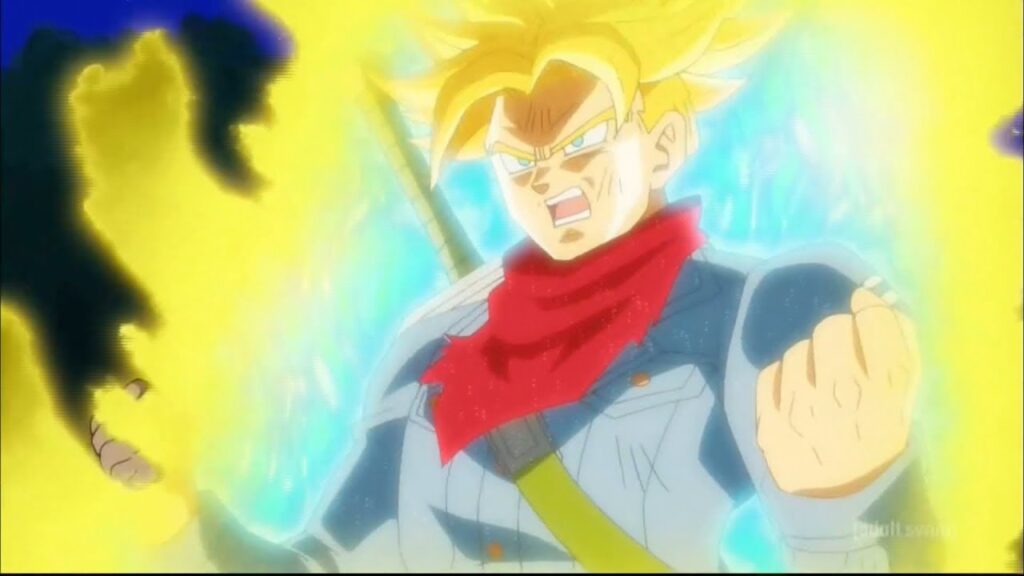
For Goku, out of his numerous battles, this one might have been the most meaningful to him. Not only did he help prop up a new hero for people that desperately needed one, but by fighting himself, he was able to defeat some of his own personal demons, while taking down a villain that tried to masquerade as him.
I wasn’t planning on writing about Dexter twice in a row, but I just finished season 4 and it’s all that’s on my mind. Season 4 of the show deals with the main character Dexter Morgan, trying to balance his new responsibilities as a husband and a father, with his life as a vigilante serial killer, murdering other killers. In this season Dexter is forced to be much more introspective and reflective, as he struggles mightily with balancing his new responsibilities. He is also forced to confront the contradictions in his life, explored mainly through his relationship with the villain of the season, Arthur Mitchell, also known as “The Trinity Killer”
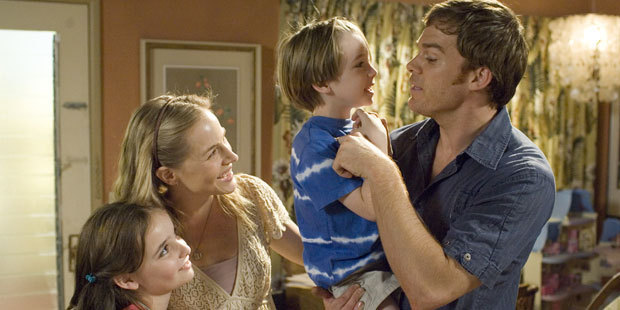
In his new marriage with Rita, Dexter is forced to sacrifice. He had to give up his apartment, which functioned as his base of operations, and was also where he kept all his murder weapons. He’s also not able to satisfy his thirst for killing nearly as much, because he has to be there for his new born child. By this point in the story, Dexter is much more in touch with his feelings, and he knows that he loves his family, so he doesn’t mind being there for them, but he begins to struggle with his lack of alone time.
This is when Dexter meets Arthur Mitchell, The Trinity Killer. Arthur Mitchell is a serial killer that had been killing for over 30 years, always killing in threes, with no one ever connecting the murders except for one Detective Frank Lundy, who passed away early in the season. Dexter uses Lundy’s findings to track down The Trinity Killer, and kill him. Dexter follows Arthur Mitchell’s van, expecting him to be a loner, but he is surprised when Arthur Mitchell arrives at home with his wife and two kids. He’s just like Dexter.
Throughout the season Dexter has been stressed about keeping his family together, while also satisfying his other persona. So when Dexter sees how long Arthur Mitchell has been able to hold his family together, he wants to learn from him. Dexter goes under the alias Kyle Butler, and befriends Arthur Mitchell, and he could kill him or turn him in at any time, but he doesn’t, because he feels he has things to learn. Dexter and Arthur have a fascinating relationship, because Dexter almost decides to kill him a number of times, but he either keeps him alive because he wants to learn more, or something gets in the way. Dexter sees Arthur sort of as a future version of himself, if he is able to balance his two lives, but he couldn’t be more wrong.
Slowly, Dexter learns that Arthur Mitchell’s family is not what they seem, and he has nothing to learn from him. Arthur Mitchell is terrible to his family, locking them in their rooms for days at a time, and abusing them. Dexter decides he needs to finally kill Arthur, but unfortunately he waited too long, and Arthur figures out who Dexter is, and where he lives.
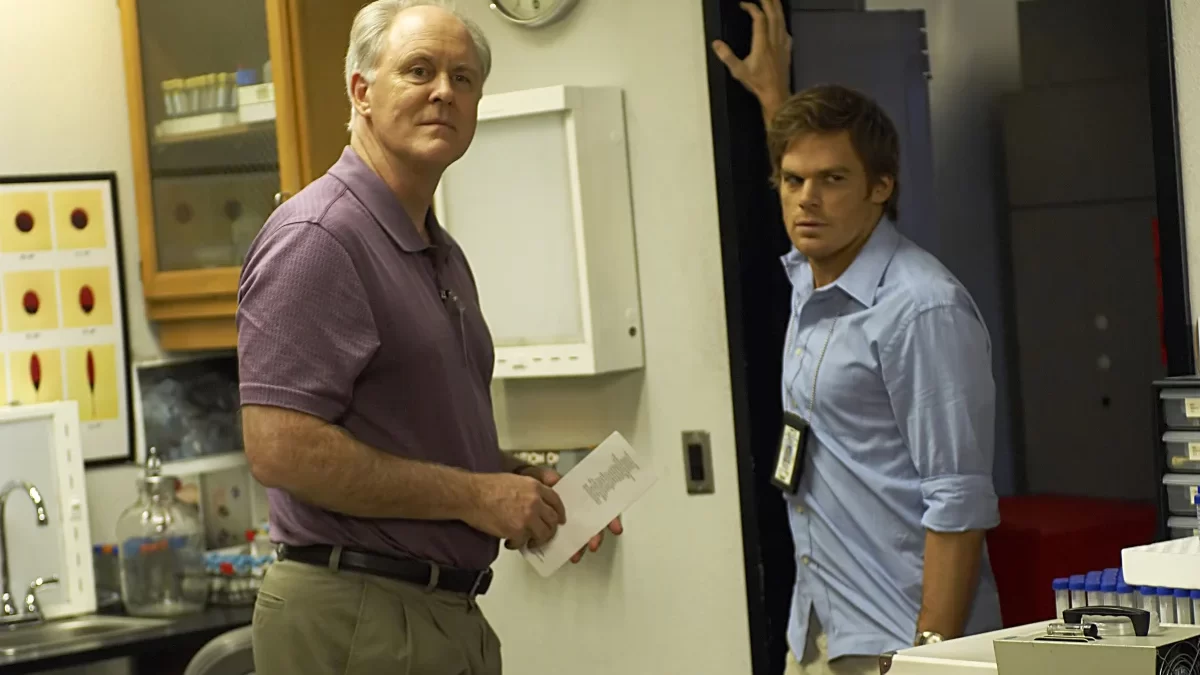
MAJOR SPOILERS:
In the final episode of the season, Dexter realizes that his wife Rita, and their children are what is important to him. He doesn’t want his lives to intertwine, and he doesn’t want his family to end up like Arthur’s, so he decides to make Arthur Mitchell his last kill, and cut off one half of his dual persona. To be safe, he sends his children to Disney World with their grandparents, and has Rita leave for their honeymoon early. It takes a while for Dexter to track down Arthur, but he finally does, and he finally kills him. As he dumps his body in the ocean, Dexter says, “I wonder if Rita’s looking at the same moon at this same moment. I like that – connected by light. The dark passenger’s been fighting against it, trying to keep me all to himself. But it’s my turn now…to get what I want – to embrace my family. And maybe one day not so long from now…I’ll be rid of the dark passenger. It all begins with a getaway. Time away from the old me.”
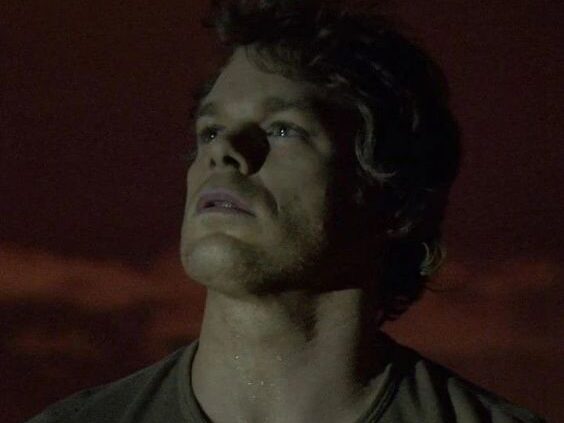
When Dexter returns home to get ready to meet Rita, he calls her phone, and the ring comes from inside the house. Dexter follows the ring and finds Rita, dead, in the bathtub, with his 10 month-old son crying. Born in blood, just like Dexter, who also watched his mom die at a young age. Rita had forgotten her passport at home and had to drive back to get it, and the Trinity Killer was waiting for her. One of the most heartbreaking scenes I’ve ever seen.
Season 4 of Dexter was full of doubles. The main one being Dexter and Arthur, which I’ve already touched on, but the most interesting one in my opinion, being Dexter and his 10 month-old son Harrison. Dexter thought he was doing everything he could to protect his family. He was finally at a point where because of his love for his wife and kids, he was ready to let go of his dark passenger, but Dexter’s sins came back to bite him, and the most innocent character in the story paid the price.
This past week I finished the first season of Dexter. The show features Michael C. Hall playing the weirdly lovable serial killer as he navigates his life, past, emotions, and identity issues. The basic premise of season 1 of Dexter revolves around the main character, Dexter Morgan, balancing his two lives as a blood spatter analyst for the Miami Metro Police Department, and vigilante serial killer, killing only those who have murdered someone before.
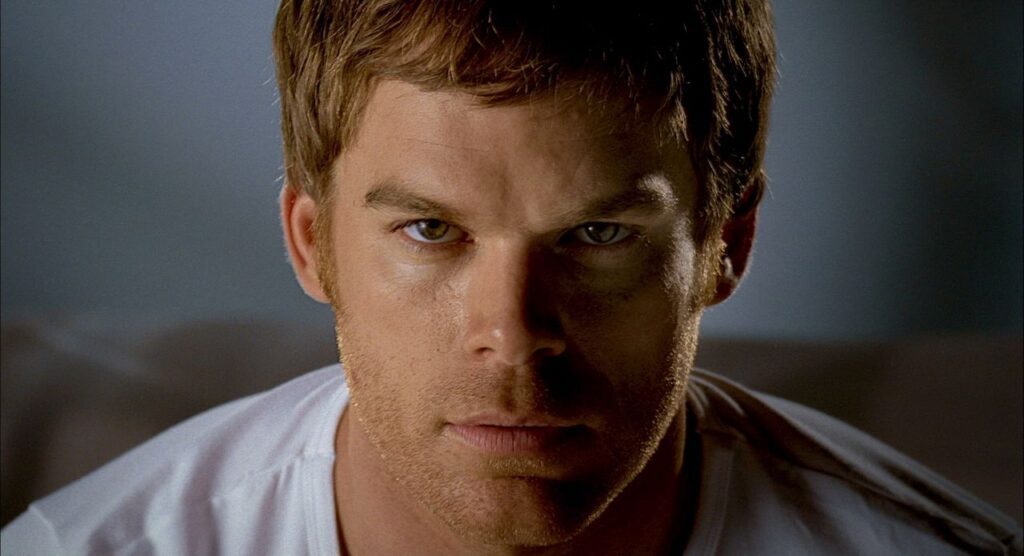
It may seem like Dexter kills other killers as a sick sense of justice, but it is really to redirect his violent urges in the least hurtful way possible. These ideals were presented to him by his foster father Harry Morgan, who could tell what type of person Dexter was, so he taught him a code to follow in order to preserve his life.
At the beginning of season 1, Dexter thinks himself emotionless, and incapable of feeling for other humans, but as the season progresses, it becomes clear that is not true. Dexter is shown to have love for his foster sister Debra and his girlfriend Rita, who is equally as damaged as him, having been a victim of abuse, and as they become closer to him, it becomes more difficult for him to conceal the other half of his double life. Throughout his whole life, Dexter wears a mask around others to effectively conceal who he really is, but as he grows closer to those around him, he states, “The mask is slipping.” He becomes so comfortable with those around him that his persona begins to crumble.
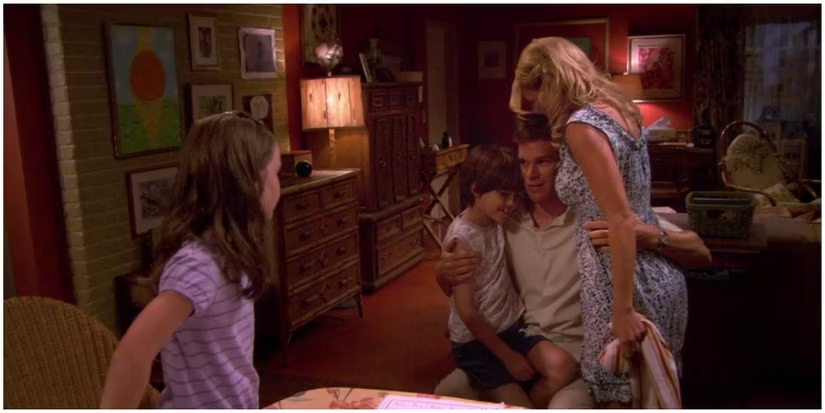
Dexter calls this other side to him, his “dark passenger” that follows him wherever he goes. At any point Dexter can fall back into a life of normalcy, but he doesn’t, because something deep down inside of him feels the need to kill. Later in the season, this need is revealed to be caused by trauma Dexter experienced at a very young age, that he blocked out his whole life. This trauma essentially is his dark passenger. It is the thing causing him to kill that he could never see.
SPOILERS: Throughout the season, Dexter and the Miami Police Department are chasing down a serial killer called “The Ice Truck Killer. At the very end of the season, this killer is revealed to be Dexter’s long lost biological brother. Dexter’s brother was affected by the same trauma Dexter experienced, driving him to also become a killer, but he kills innocents. This character, Brian Moser, is a doppelganger of Dexter. He is what would’ve happened to Dexter had he not had his father’s code to live by. Dexter ends up murdering his brother, his only biological family left, killing the hypothetical version of himself
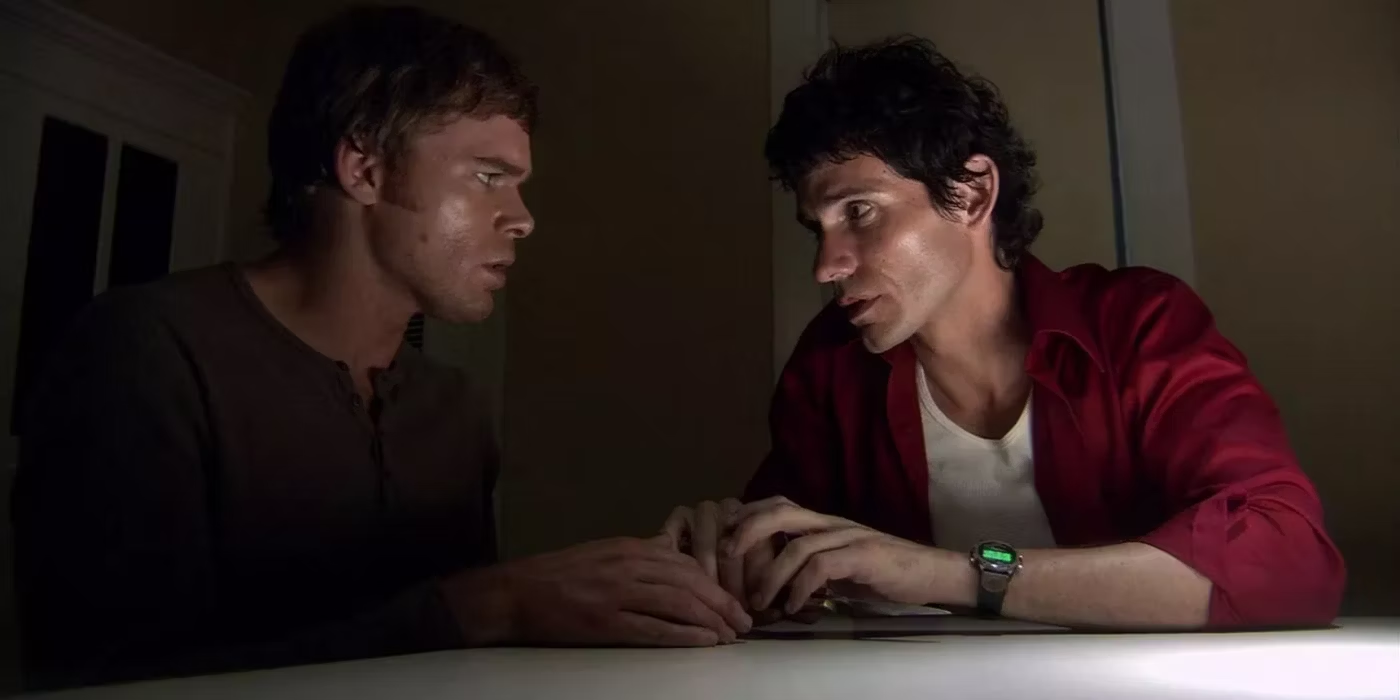
Dexter Morgan is a very interesting look at the idea of dualism, and trying to balance two lives. It is in Dexter’s nature to kill, but he also has people he loves and wants to protect, and the knowledge that he is a killer would ruin their lives, so he can never let the two lives touch.
- Perry, Lauren. Dexter Morgan. 2014. Thought Catalog, https://thought.is/40-alternate-dexter-endings-that-are-considerably-better-than-the-original/. Accessed 24 Sept. 2024.
↩︎ - Ackerman, Kendra. Dexter and Rita With the Kids. 13 Feb. 2021. ScreenRant, https://screenrant.com/dexter-best-episodes-watch-miss-rita/. Accessed 24 Sept. 2024.
↩︎ - Fontes, Renan. Picture of Dexter Morgan and Brian Moser. 13 May 2022. ScreenRant, https://screenrant.com/dexter-worst-villains-ranked/. Accessed 24 Sept. 2024.
↩︎
I recently saw Trap, the newest film from the divisive director M. Night Shyamalan. The Movie stars Josh Harnett playing the serial killer Cooper, as he tries to escape a trap set by the police to catch him. Cooper, also known in the film as “The Butcher”, is a classic suburban dad, bringing his daughter to her favorite artists concert. But he quickly learns that the performance is doubling as an elaborate trap to catch “The Butcher”, whom the police know will be at the concert. As the walls slowly close around Cooper, his double life, and sadistic nature is revealed to the audience.
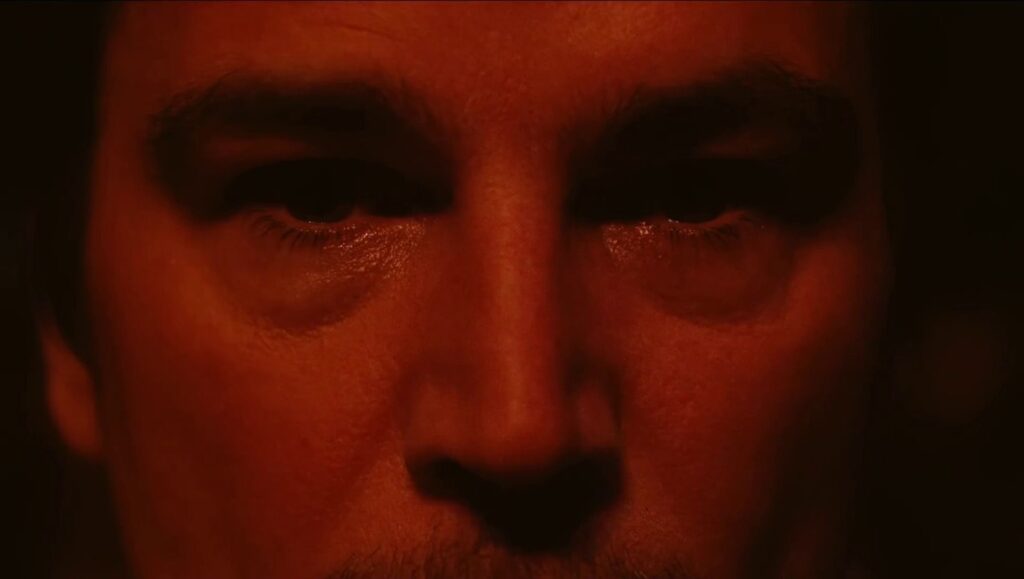
Cooper is a vintage example of a double, and the idea of dualism, but what’s under the surface of the character is what makes him so interesting. Despite being a crazed, and bloodthirsty serial killer, Cooper truly and genuinely loves and cares for his wife and children. He’s not the emotionally unavailable serial killer we usually see in media, and this departure from the norm is what makes Cooper a character worth analyzing.
The main conflict of the movie is Cooper being cornered by the police, but the conflict inside Cooper is mainly a desperate need to keep his two lives separate. Yes, Cooper takes pride in his ability to live two completely different lives, but his main motivation to keep them separate is his family. Cooper loves his family, and they are what gives him an identity in his public life. They view him as their loving husband and father, so getting caught would shatter their view of him, and his view of himself, leaving Cooper with no true identity. And this is exactly what happens at the end of the film.
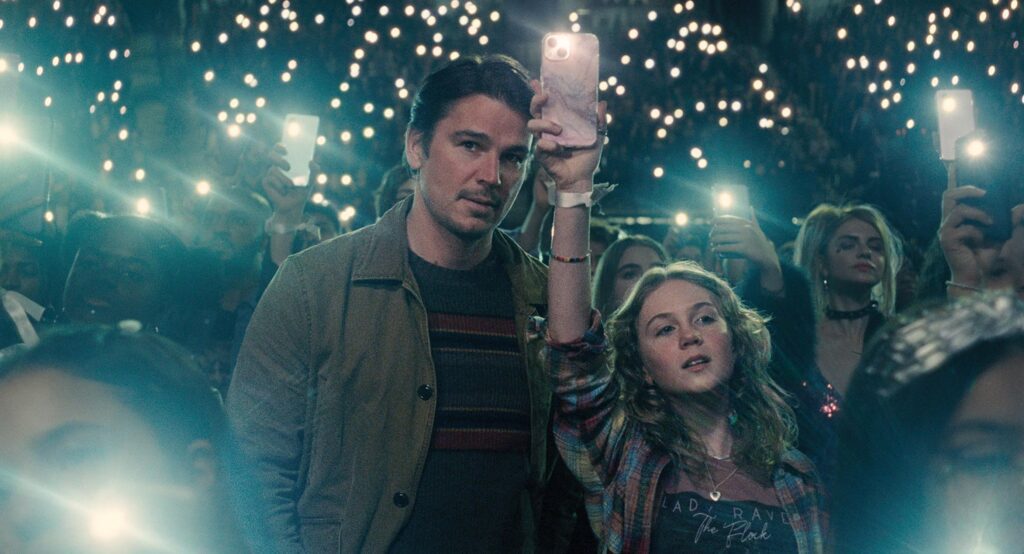
Cooper gets exposed to his family, and this crushes him. In the first two acts of the movie the audience watches as Cooper seamlessly alternates between his two personas, but in the third act Cooper has lost everything that would identify him as “normal”. After taking a moment to say goodbye to his family, Cooper dives completely off the deep end. He’s no longer calm, cool, and collected. He’s frantic, and the film ends with Cooper escaping police custody.
The character of Cooper is a fascinating look at dualism, and how trying to flip between two personas can crumble oneself, leaving them with no identity. He is also a look at how the idea of dualism can breathe life into a character. Throughout the film, Cooper not only has to deal with escaping the arena filled with police presence, but he also has to scramble to maintain his dual personality. Without this added tension, the film likely wouldn’t work. Ultimately, Cooper is a captivating example of dualism in modern media.
- Still of the character Cooper from the film Trap. Raup, Jordan. “Trap.” 18 Apr. 2024. TheFilmStage, https://thefilmstage.com/josh-hartnett-is-caught-in-m-night-shyamalans-trap-in-first-trailer-for-concert-set-thriller/. Accessed 7 Sept. 2024.
↩︎ - Still of the characters Cooper and Riley from the film Trap. Tenreyro, Tatiana. 10 Aug. 2024. The HollyWood Reporter, https://www.hollywoodreporter.com/movies/movie-news/trap-movie-true-story-operation-flagship-1235968441/. Accessed 8 Sept. 2024.
↩︎
